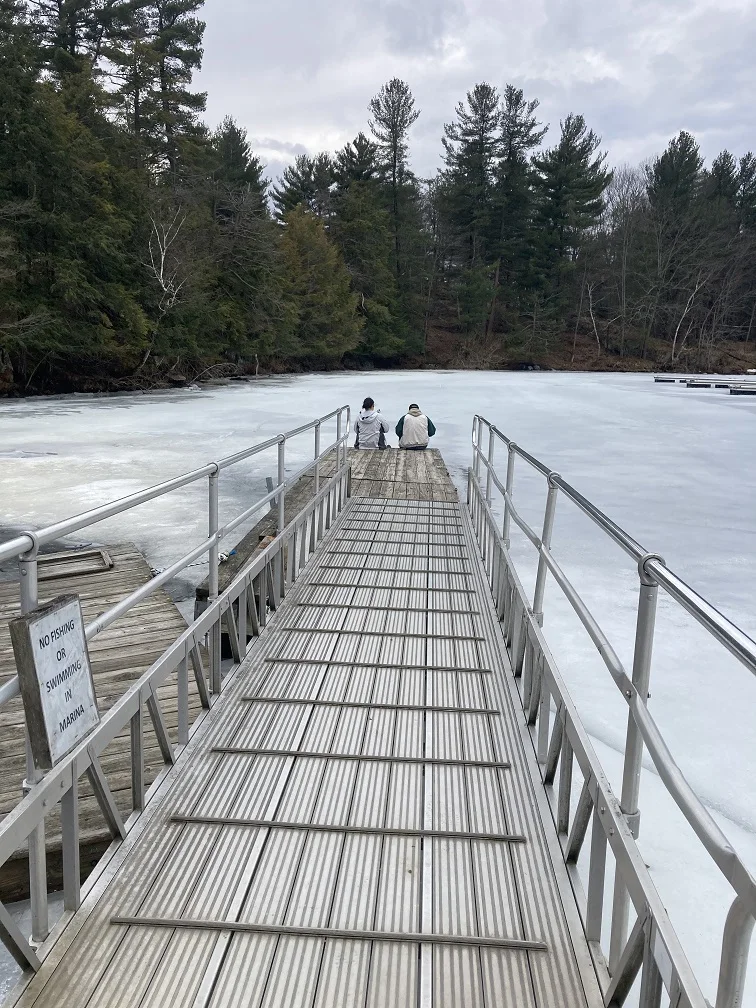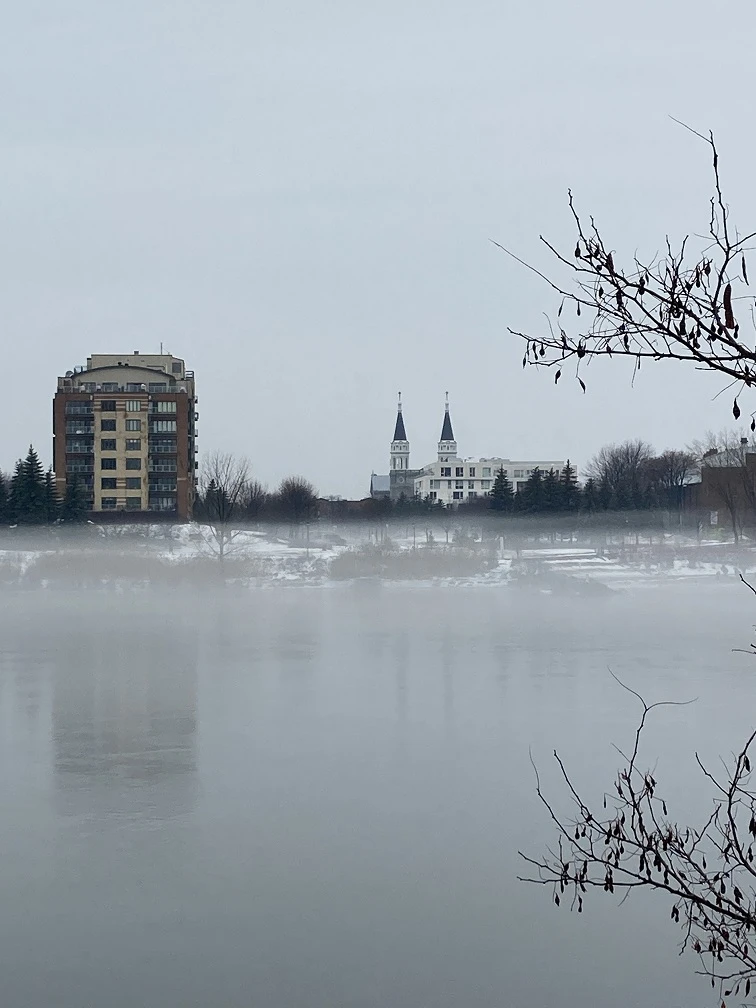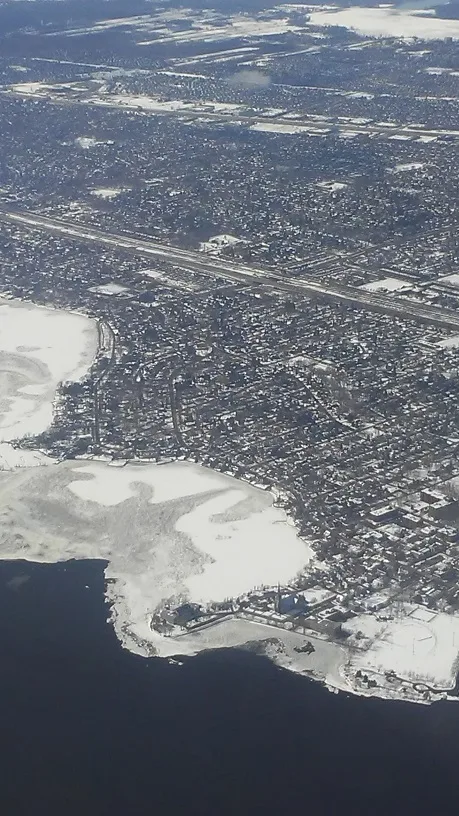Have you wondered if the St. Lawrence River freezes in the winter? In this post, learn all about how and where this important river freezes, and more!

The St. Lawrence River runs northeast from Lake Ontario more than 740 miles to the Gulf of St. Lawrence in the Atlantic Ocean. The river serves as a de-facto border between the United States and Canada as it flows past the northern borders of Jefferson and St. Lawrence counties, as well as the Mohawk Nation in New York before it continues north into Canadian territory.
When I was going back through all of my photographs of the river to write this article, I realized that I might be just a little bit obsessed with the St. Lawrence. I think it’s okay, though, since it’s such an important part of the lives of people here in the North Country, and in Canada, too.
I hope that you enjoy this article and learn everything that you were hoping to know about what the river is like during the winter. It is definitely a magical and unique time of year up here!
When does the St. Lawrence River freeze?
The St. Lawrence River usually starts freezing sometime in December. People will notice ice forming near the shores and in shallow parts of the river first, and then much of the river will have some ice cover, of varying thickness, for most of the winter.

How long does the St. Lawrence River stay frozen?
When it comes to the St. Lawrence River, there is no moment where the river is entirely frozen in all places, and it takes a long time to completely thaw in the spring. The ice melts slowly as temperatures rise, and as chunks of ice break away, more water is exposed which helps the rest of the ice melt faster.
By the beginning of April, the ice on the St. Lawrence River is completely melted. The melting process is also aided by ice-breaking ships that operate due to a partnership between the Canadian and United States Coast Guards in order to facilitate the re-opening of the St. Lawrence Seaway shipping channel.

Shallow areas like small bays or inlets will take long to completely thaw. Although this might seem counterintuitive, it is because these areas likely have thicker ice due to less flowing water underneath.
Where does the St Lawrence freeze?
The surface of the United States portion of the St. Lawrence River is not usually completely frozen during the majority of winters. You are most likely to find thick ice on the river in shallow areas or where the current is slow, since fast moving water will melt the surface ice or make it very thin.
It is important to mention that the St. Lawrence River is generally considered a dangerous river to use during the winter. Since the river does not completely freeze over, the open channels of the river are unsafe even when the river looks frozen.
In the photo below, taken at the very end of December in Montreal, the St. Lawrence appears frozen. However, you might note a “glisten” on the surface of the photo – it’s water.

Photo credit: Naomi from discovernorthcountry.com
The river ice here was very thin, which is why there was some water on top of it. Later in the winter, it is more likely to have thicker ice – but it would still be unwise to access the river from the ice.
Can ships pass through the St. Lawrence in the winter?
Ships cannot pass between Montreal and Lake Ontario from December-March. While ice is the reason that the shipping channel is not accessible throughout the winter, the way in which the ice affects the ships’ ability to pass through the channel might surprise you.
Ice breakers maintain a very narrow channel between the Gulf of St. Lawrence and Montreal during the winter. This dangerous winter job is performed

So, while ice breakers could, in theory, maintain a narrow channel in the main part of the river throughout the winter, the ice in the canals and locks would still make transiting through this waterway by boat impossible.
There are many canals and locks on the St. Lawrence that cannot operate during the winter due to the interference of the ice accumulation.
Can you ice fish on the St. Lawrence?
Yes, there are some places where it is popular to ice fish on the St. Lawrence River. These popular places are also usually the safest: shallow places where the ice can up to a foot or more thick.
According to the New York DEC, ice should be at least 4″ thick on non-running water ice before ice fishing should be attempted, which means that the ice on the St. Lawrence should be thicker for ice fishing. It is also important to take all recommended safety precautions (and I’m not an expert on this – so be sure to consult one).
Since the St. Lawrence River angles north into colder Canadian winter temperatures, the river may have thicker ice in some sections. However, the water is also has a higher salt content past Montreal, which means that it will need even colder temperatures to freeze.

The photograph above was taken at Eel Bay off of Wellesley Island. This small bay is only about 6-10 feet deep and the ice was thick during the winter when I went ice fishing here.
However, the ice is not always uniform in thickness, and some winters are colder than others. This means that sometimes the ice will melt sooner or later than the year before.
Sometimes, the winter is too warm and the ice is not safe to be out on. The winter of 2023-2024 saw conditions where the ice was too thin for safe ice fishing in many parts of the North Country, including parts of the St. Lawrence River.
Conclusion
I hope that you enjoyed this article and that you were able to learn everything that you wanted to know about the St. Lawrence River’s frozen winters. If you have any questions, please join in the discussion below and I’ll try to answer!
Thanks for reading today!
